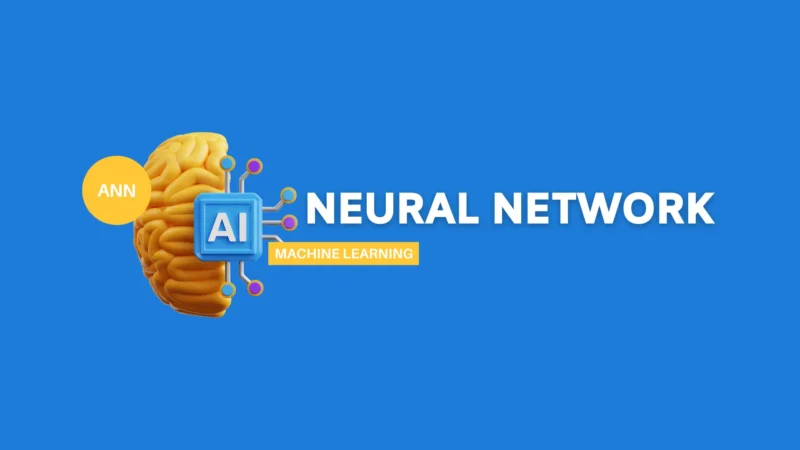Greetings, fellow Nawala! May you always be in good health.
This is the IAES Nawala of the Institute of Advanced Engineering and Science. Today we will share some news about neural networks. Neural networks (NN) are computational models created by mimicking the structure and function of the human brain as a model. NN consists of interconnected nodes (artificial neurons) that process data and learn through experience of the data. NNs make it possible to learn complex relationships in data, making predictions or classifications more accurate. Rajendran and Ganapathy (2022) researched NN and proposed the use of machine-learning algorithms to detect seizures. The results of their research show that the use of artificial neural networks (ANN) can achieve 96% accuracy. Based on these results, it can be concluded that ANN shows satisfactory accuracy and sensitivity in detecting seizures.
Neural network based seizure detection system using statistical package analysis
Priyanka Rajendran, Kirupa Ganapathy
Due to the unpredictable interruptions within the functions of the human brain, disturbance occurs and it affects the behavior of the human and is equally laid low with the frequent occurrence termed as seizures. Therefore, the proposed system detects the seizure using machine learning algorithms. The electroencephalogram (EEG) contains information of the brain to detect the seizure. The objective is to evaluate the performance of machine learning classifiers K-nearest neighbors (KNN), artificial neural network (ANN), support vector machine (SVM) and principal component analysis (PCA) by comparing the accuracy of the classifier. This work uses total of 11,500 EEG samples from the UCI machine learning repository. The seizure detection was done in two ways. First method, features extracted from the EEG signal and classification techniques are done to classify the seizure. The second method uses the principal component analysis algorithm to improve the significant selections of features from the dataset. The outcomes are analyzed using the statistical package for the social science (SPSS) tools. ANN with extracted functions achieved 96% of accuracy and significant efficiency of (p less than 0.05) in comparison with different machine learning classifiers. It would be prudent to conclude that the ANN demonstrated the best accuracy, sensitivity, and specificity.
In addition to the use of ANN algorithms, the NN model also has a convolution neural network (CNN) algorithm. Nafi’iyah and Yuniarti (2022) used the CNN algorithm to classify skin cancer, whether it is classified as benign or malignant cancer. The first model with 93% accuracy was used in making web-based applications using the Django framework. The accuracy obtained is high for identifying skin cancer.
A convolutional neural network for skin cancer classification
Nur Nafi’iyah, Anny Yuniarti
Skin diseases can be seen clearly by oneself and others. Although this disease is visible on the skin, sometimes we worry if this skin disease is not mild. Some people experience skin diseases directly and quickly go to a dermatologist to have their complaints and symptoms checked. This skin protects the body, especially from the sun, so it can lead to death if something goes wrong. One example of a skin disease that can be deadly is skin cancer or skin tumors. In this research, we classified skin cancer into Benign and Malignant using the convolution neural network (CNN) algorithm. The purpose of this research is to develop the CNN architecture to help identify skin diseases. We used a dataset of 3,297 skin cancer images which are publicly available on the Kaggle website. We propose two CNN architectures that differ in the number of parameters. The first architecture has 6,427,745 parameters, and the second architecture has 2,797,665. With both architectures, the accuracy of the first model is 93%, and the second model is 74%. The first model with the number of parameters 6,427,745 We save for use in the creation of the website. We created a web-based application with the Django framework for skin disease identification.
Shiddiq et al. (2024) implemented NN in agriculture. Their research showed that combining hyperspectral imaging and ANN can accurately predict the maturity of oil palm fruit bunches. This method shows great potential for application in the agricultural industry, especially palm oil.
Neural network with k-fold cross validation for oil palm fruit ripeness prediction
Minarni Shiddiq, Feri Candra, Barri Anand, Mohammad Fisal Rabin
The combination of hyperspectral imaging and artificial neural network (ANN) can predict fruit ripeness. This work investigated the application of hyperspectral imaging and ANN models with the k-fold cross-validation method for ripeness prediction of oil palm fresh fruit bunches (FFB) for inline sorting and grading machine vision. Crude palm oil (CPO) is an exporting commodity for countries such as Indonesia and Malaysia. Oil palm FFB ripeness determines the quality of CPO. The unique shapes and colors of FFBs need innovative methods to substitute tedious and cumbersome manual sorting and grading. The oil palm FFB samples used in this study were categorized previously based on color and loosed fruits. We applied the Savitzky-Golay (SG) smoothing filter and 7-fold cross-validation for hyperspectral datasets before being used for the ANN models and a confusion matrix to find the ANN model accuracies. We obtained 72 data points after SG filter and data selection from 523 data points. The prediction results showed an average accuracy of 79.48%, in which three folds with k of 2, 5, and 7 gave the highest accuracy of 90%. The results confirmed the potential use of hyperspectral imaging, with k-fold cross-validation and ANN models for ripeness prediction of oil palm FFBs.
The above articles are just a small part of the research on the development and role of neural networks. To get more information, readers can visit the page and read articles for FREE through the following links: https://www.beei.org/, http://telkomnika.uad.ac.id/, and https://ijict.iaescore.com/.
By: I. Busthomi

